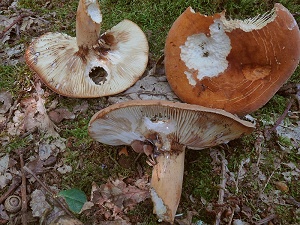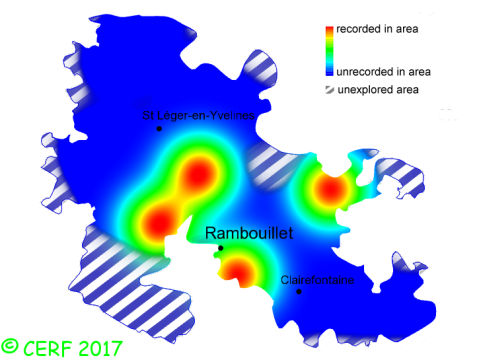| Lactarius volemus (Fr.:Fr.) Fr. |
|
|
|
|
|
|
The cap is orange red. The cap surface is without concentric bands, not viscid nor sticky. The stem is orange red, without ring. The flesh is white to cream, turning brown when exposed to air; its taste is mild; the odour is of cooked seafood or artichoke; its texture is grainy (breaking like a chalk stick), exuding when cut a white milk, turning brown. The gills are cream to ochraceous yellowish, adnate to decurrent, crowded . The spore print is white. This species is mycorrhizal. It grows in damp broad-leaved (also coniferous) woods, on a rather clayey-calcareous soil, with spruce, pine, beech, oak, hornbeam, chestnut, poplar. The fruiting period takes place from June to November.
Chemical tests : flesh becoming olive-green when in contact with iron sulphate. Distinctive features : orange-brown to red-brown cap, not sticky; flesh exuding white and abundant, mild milk when cut, turning brown when drying; odour of artichoke or cooking crab Lactarius volemus is quite rare and localised in the forest of Rambouillet, and is infrequent, more generally speaking . | ||
|
page updated on 14/01/18

